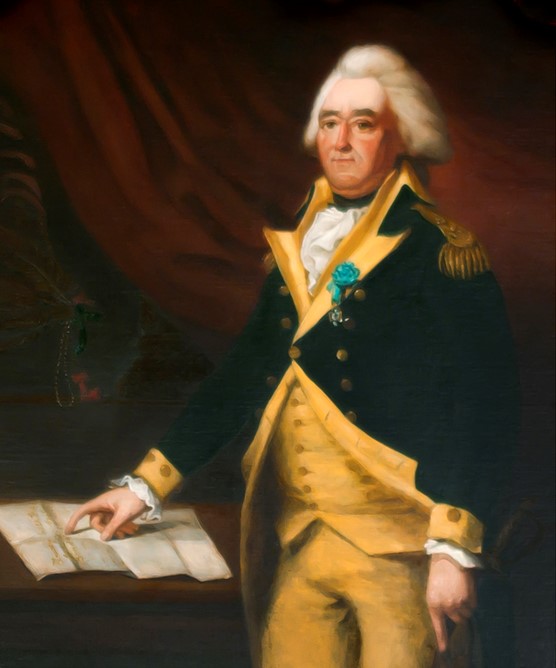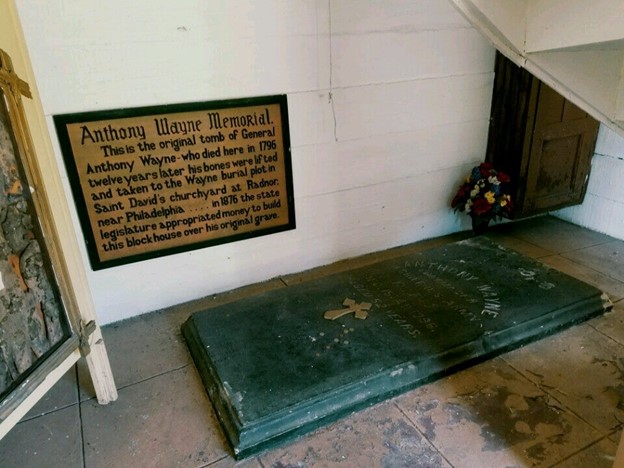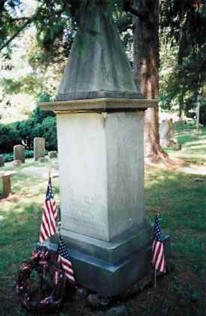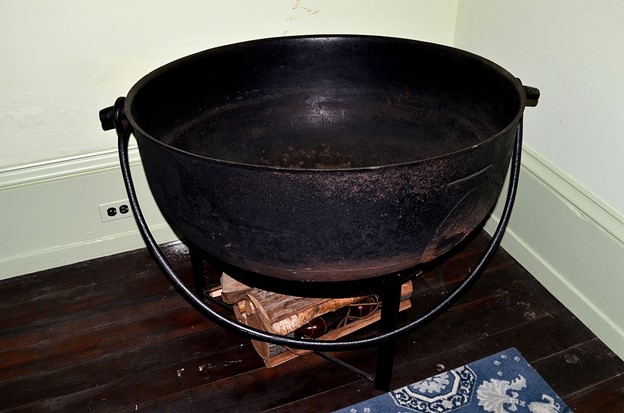
As Halloween draws near, we are reminded of the legend of General “Mad Anthony” Wayne’s bizarre story of his death, likely from gout, on December 15, 1796, at the American fort at the site of the modern Wayne Blockhouse.
Wayne, a hero of the American Revolution, had earned his nickname “Mad” for his short temper and impetuosity. In the post-war years, he had defeated the native tribes of the mid-west allowing for westward expansion and a favorite of George Washington, was returning to his home in Radnor, Chester County, Pennsylvania aboard a ship on Lake Erie. Wayne, suffering badly, was taken to the small post on Garrison Hill overlooking the entrance to Presque Isle Bay and there, he died.

Wayne was buried at the foot of the post’s flagpole as per his request. Thirteen years later, his son, Colonel Isaac Wayne arrived and requested his father remains be exhumed for return and reburial in the Wayne family plot in Radnor, Chester County, Pennsylvania. Wayne’s remains were “rendered” or boiled down to his bones. A portion of the bones were apparently boxed up and given to his son for transport via a two wheeled cart across the state for internment in St. David’s Episcopal Churchyard in Radnor, Pennsylvania.

The Legend-“Not all the bones made it.” In his 1973 book Mad Anthony Wayne and the New Nation, Glenn Tucker writes that Dr. J.G. Wallace who rendered or boiled Wayne’s remains in the now famous Iron kettle in the collection of the Hagen History Center in Erie, Pennsylvania, did not give Isaac Wayne all of the bones, thus possibly giving rise to the legend that Wayne’s ghost (and the ghost of his horse Nancy) can be seen riding between Erie and Chester County each January 1st, Wayne’s birthday, roughly along U.S. Rout 322, looking for his missing bones. Wayne is indeed buried in two graves, one in Erie, one in Radnor, Chester County.

So, how did the doctor come up with the idea to boil Wayne’s body to separate the bones from the flash? He did not. Rendering animals had been used for centuries. Animal remains were often boiled or rendered in large kettles over an open fire. Soap and candles were made from the fat. While it is doubtful that soap or candles were made from General Wayne’s body, the non-bone part of his body, flesh and organs, was returned to the coffin, along with the knives used to commit the gruesome act and reburied at the foot of the flagpole. The rest went with his son Isaac.
The introduction of soaps using various chemical detergents in the 1920s effectively ended the use of animal fat in soaps. Today, rendering is still used, primarily in the manufacture of pet food and fertilizers, though the process is different.
As ghoulish as it may seem to us today, remember the old saying, “you don’t want to know how the sausage is made.” Be sure you check out our line of “Mad Anthony” Wayne soaps and candles when you visit our gift shop. (Just kidding.)
Happy Halloween!
